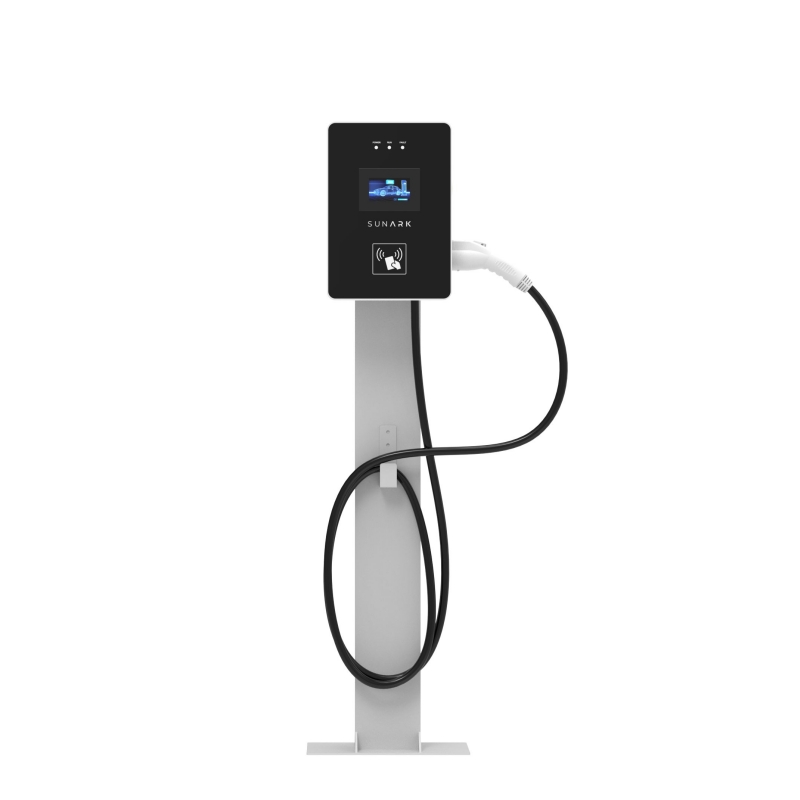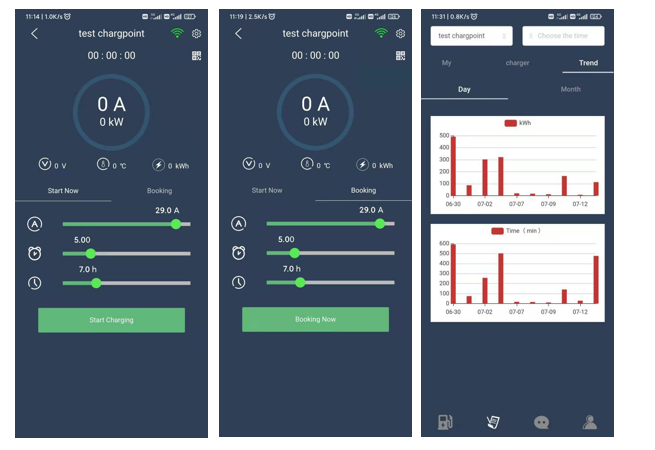Fast charging EV chargers, also known as DC fast chargers or Level 3 chargers, are designed to charge electric vehicles (EVs) at a much higher rate compared to standard Level 1 or Level 2 chargers. These chargers utilize direct current (DC) power instead of alternating current (AC) power to provide a rapid charging experience.
Standard:
SAE Standard / IEC StandardConnector type:
Type 1 / Type 2Connector Mechanical Operating Life:
≥10000 times
Here are some key features and details about fast charging EV chargers:
Charging Speed: Fast chargers can deliver a significantly higher charging power, typically ranging from 50 kW to 350 kW or more. With such high power, they can rapidly replenish the battery of an electric vehicle. Charging times can vary depending on factors such as the EV's battery capacity, state of charge, and the charger's power output.
Connector Types: Fast charging connectors primarily include CHAdeMO, CCS (Combined Charging System), and Tesla Supercharger connectors. CHAdeMO is commonly used by Japanese and Korean EV manufacturers, while CCS is widely used by European and North American manufacturers. Tesla Superchargers are compatible with Tesla vehicles.
Compatibility: Fast charging is not supported by all electric vehicles. Before using a fast charger, it's important to ensure that your EV is equipped with the appropriate charging port and is compatible with the charger's connector type. Many modern electric vehicles come with the ability to use multiple connector types or provide adapters for compatibility.
Charging Infrastructure: Fast charging stations are often installed along major highways, in urban areas, and at strategic locations to enable long-distance travel and facilitate quick charging for EV owners. The availability of fast chargers can vary based on the region and local infrastructure development.
Pay and Access Methods: Fast charging stations may have different payment and access methods. Some stations require users to sign up for an account or use a charging network's mobile app or RFID card for access and payment, while others may offer contactless payment options or accept credit cards.
It's worth noting that while fast chargers can significantly reduce charging times, frequent use of high-power charging can affect the long-term battery life and health of an electric vehicle. It is recommended to follow the manufacturer's guidelines and balance the usage between fast charging and slower charging methods for optimal battery management.

the advantages of AC EV chargers:
Save money: they are more affordable compared to DC fast chargers. They use the existing alternating current (AC) power grid infrastructure, which is already widely available, reducing the need for additional costly installations.
Compatibility: AC chargers are compatible with all electric vehicles (EVs) on the market since all EVs have onboard AC-to-DC converters. This means that any EV can be charged using an AC charger, regardless of its battery capacity or charging capabilities.
Flexibility: AC chargers come in various power ratings, typically ranging from 3.7 kW to 22 kW. This flexibility allows EV owners to choose charging speeds based on their needs. For instance, slower charging can be sufficient for overnight charging at home, while higher charging speeds may be required for commercial charging stations or public areas with higher demand.
Safer: AC chargers are generally considered safer than DC fast chargers because they operate at lower voltages. Additionally, AC chargers don't require high-voltage connections to the vehicle, reducing the risk of electrical hazards and potential damage to the vehicle's battery.
Availability: AC charging stations are more widely available compared to DC fast chargers. They can be found in various locations such as homes, workplaces, parking lots, and public charging stations, making it easier for EV owners to find a charging option when needed.
Energy efficiency: AC chargers have higher charging efficiency compared to DC fast chargers. The conversion from AC to DC happens within the vehicle's onboard charger, which allows for better control and optimization of the charging process.

How to use DC EV charge station?
Check the compatibility: make sure that your electric vehicle is compatible with the DC charger and the specific charging standard it supports
Check the station: to check any visible damage or signs of malfunction.
Connect cables: Lift the charging connector, which is often attached to a cable, and insert it into the vehicle's charging port.
Follow instructions: Look for any instructions or prompts displayed on the charging station's screen, if available.
Start charging: Once the connection is established and any required authentication is completed, the charging session should automatically start.
Wait for completion: The charging process may take anywhere from a few minutes to an hour or more, depending on the battery capacity, charging speed, and required charge level. Use this time to take a break, run errands, or relax nearby.
End the session: Once the desired charge level is reached, or you no longer need to charge, follow the instructions on the charging station to stop the charging session properly.
Disconnect and secure the cable: Once the charging session is stopped, unplug the charging connector from the vehicle's charging port.

How to use the monitoring APP?
Centralized Monitor System: EV chargers can be connected to a centralized monitoring system that allows operators or administrators to remotely monitor the charging status, energy consumption, and any faults or abnormalities of the chargers.
Mobile Applications: Many EV charger manufacturers provide mobile applications that allow users to monitor and control the charging process.
Website: Some EV charging networks offer web portals where users can log in to monitor their charging sessions, view charging history, and access other relevant information.
RFID or NFC Card: EV chargers can be equipped with RFID (Radio-Frequency Identification) or NFC (Near Field Communication) card readers.
Display Screens: Many EV chargers have built-in display screens that show real-time charging information, such as charging power, charging time
It's worth noting that AC chargers are generally slower compared to DC fast chargers, which can be a disadvantage when fast recharging is needed. However, for everyday charging needs and regular use, AC chargers offer a convenient and cost-effective solution.
FAQs:
Q1: Do you support OEM/ODM?
A:Definitely, OEM&ODM service is supported with a certain quantity,including customize logo,package and label;
Q2: What's the production time?
A: The production time is normally 15 working days. but we will always prepare some stocks for popular models.
Q3: Can you provide DDP service?
A:Yes, if you are a personal customer and don't want to deal with the customs, we can provide DDP service to your address.
Q4: What about the warranty and how to claim?
A: Warranty period are 5 years since you receive the product, our professional after-sales team will deal with all warranty issues.